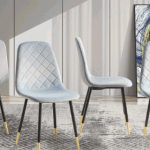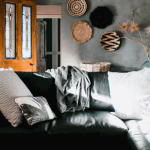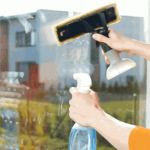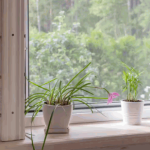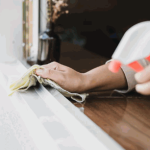Looking to give your leather sofa a fresh new look? Dyeing your leather sofa can be a great way to change its color, cover up stains or damage, and refresh its appearance.
We will explore the different types of leather dyes, the steps to dye a leather sofa properly, and some helpful tips for achieving the best results.
Whether you want to update the color of your sofa or simply revive its look, we’ve got you covered with all the information you need. Let’s get started on transforming your leather sofa!
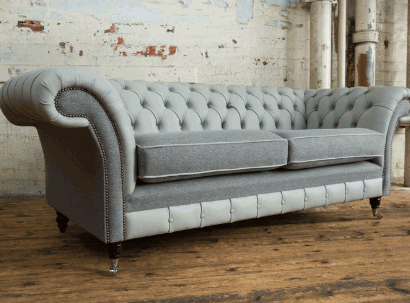
What Is Leather Dyeing?
Leather dyeing is the process of changing or enhancing the colour of leather through the application of specialised dyes or colourants. It is a skillful technique that requires expertise and care to achieve desired results.
There are various methods of leather dyeing, including dip-dyeing, spray dyeing, and hand rubbing. Each method offers different levels of control over the final colour and finish. Tools such as brushes, sponges, and airbrushes are commonly used in the dyeing process to ensure even coverage and precise application.
The importance of leather dyeing extends beyond aesthetics; it also helps to protect the leather from wear and tear, UV damage, and moisture. By choosing the right dye and applying it correctly, the leather can be rejuvenated and preserved for years to come.
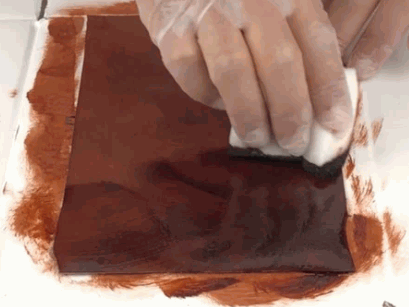
Why Dye A Leather Sofa?
Dyeing a leather sofa serves multiple purposes, such as changing the colour to match the new decor, covering up stains or damage, and refreshing the overall look of the furniture piece. It offers a cost-effective way to revamp the appearance of the leather sofa.
One of the significant advantages of dyeing a leather sofa is the ability to customise it to your preferred shade, ensuring it seamlessly blends with the updated style of your living space. The process of dyeing not only conceals imperfections like blemishes and discolouration but also provides a protective layer against future wear and tear. This transformation can breathe new life into your beloved leather sofa, prolonging its lifespan with a fresh and vibrant hue that complements your interior design.
To Change The Colour
One of the main reasons to dye a leather sofa is to change its colour to better suit the updated decor or personal preferences. By selecting the right dye colour, you can transform the appearance of the leather furniture piece.
When considering dyeing a leather sofa, the first step is to choose the appropriate leather dye that is specifically formulated for the type of leather used in the sofa. This ensures that the dye adheres properly and provides a lasting colour.
Colour selection plays a crucial role in achieving the desired results, whether you want a subtle change or a bold new look. It’s essential to test the colour on a small, inconspicuous area of the sofa to preview how it will appear before proceeding with the full dyeing process.
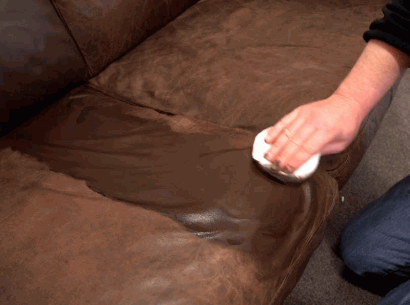
To Cover Up Stains Or Damage
Dyeing a leather sofa can effectively conceal unsightly stains or damage that may have accumulated over time. By applying the right dye, you can give a fresh look to the sofa while hiding imperfections.
To begin the process, start by thoroughly cleaning the leather surface to remove any dirt or residue that could affect the dye’s adhesion. Once the leather is clean and dry, choose a high-quality leather dye that matches the sofa’s original colour. It’s crucial to test the dye on a small, inconspicuous area first to ensure a perfect colour match. When you’re ready to apply the dye, use a sponge or brush to evenly distribute it on the leather, working in thin, even coats to avoid buildup or streaks.
Take a look: How To Clean Leather Couches Before Dyeing
To Refresh The Look Of The Sofa
Refresh the look of a leather settee by dyeing it, giving it a new lease of life. Over time, leather furniture can lose its lustre, and dyeing provides an opportunity to restore its original elegance.
When considering dyeing a leather settee, it’s important to choose a high-quality dye that is specifically designed for leather. This ensures that the colour adheres well and maintains the softness and flexibility of the material.
Before starting the dyeing process, thoroughly clean the settee to remove any dirt or stains that may affect the final result. Make sure to test the dye on a small, inconspicuous area of the settee to ensure the colour matches your expectations.
What Are The Types Of Leather Dyes?
There are various types of leather dyes available, including water-based dyes, alcohol-based dyes, and oil-based dyes. Each type offers unique properties and application methods suitable for different leather surfaces.
Water-based dyes are known for their eco-friendly nature and quick drying time, making them ideal for fine leather goods and projects that require intricate detailing. On the other hand, alcohol-based dyes penetrate deep into the leather, offering vibrant colours and excellent colour retention. They are commonly used for large surfaces like furniture upholstery.
Oil-based dyes provide rich, deep colours and are perfect for creating a distressed or vintage look on leather items such as jackets and belts. They offer excellent coverage and are suitable for thicker leather types.
Water-Based Dyes
Water-based dyes are suitable for leather dyeing projects due to their ease of use and eco-friendly nature. They provide vibrant colours and are ideal for beginners looking to experiment with leather dyeing.
Water-based dyes offer several key advantages that make them a popular choice among leather artisans. The application of these dyes is effortless, as they penetrate the leather surface easily without the need for complex procedures. The colour intensity achieved with water-based dyes is remarkable, ensuring that the final leather product boasts bold and long-lasting hues. These dyes are known for their eco-friendly properties, making them a sustainable option for crafting vibrant leather goods while minimising environmental impact.
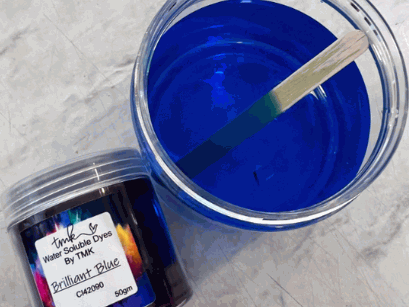
Alcohol-Based Dyes
Alcohol-based dyes offer fast-drying properties and intense colours, making them a popular choice for colouring leather surfaces. They penetrate well into the leather, providing long-lasting and rich colour finishes.
One of the primary benefits of using alcohol-based dyes for colouring leather surfaces is their ability to dry rapidly, allowing for efficient application and process completion. The quick-drying nature of these dyes saves time and reduces the risk of smudging or colour bleed, resulting in a more precise and professional outcome.
The intense colours offered by alcohol-based dyes create a vibrant and striking appearance on leather, enhancing the overall aesthetic appeal of the finished product. This colour depth contributes to a luxurious and high-quality finish, making the leather surfaces stand out and exude elegance.
The durability of alcohol-based dyes ensures that the colour remains vivid and resistant to fading or wearing off over time. This longevity adds value to the leather items, ensuring they maintain their rich colours for an extended period.
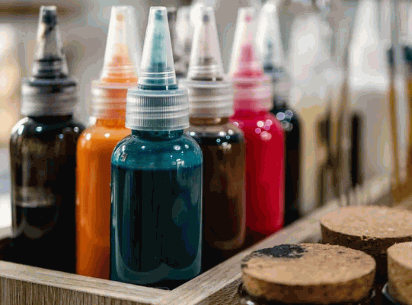
Oil-Based Dyes
Oil-based dyes are known for their deep penetration into leather and their ability to enhance the natural texture of the material. They are suitable for intricate dyeing processes that require a professional touch.
One of the key characteristics of oil-based dyes is their remarkable ability to seep deep into the pores of the leather, ensuring long-lasting and vibrant colour results. This deep penetration not only provides an intense hue but also helps in creating a rich and consistent finish across the entire piece.
The texture enhancement offered by oil-based dyes is unparalleled. When applied, these dyes not only colour the leather but also accentuate its natural grain and characteristics, adding depth and dimension to the material, and resulting in a visually stunning appearance.
What Are The Steps To Dye A Leather Sofa?
Dyeing a leather sofa involves several key steps to ensure a successful outcome. From preparing the leather surface to applying the dye and finishing with a protective coat, each step plays a crucial role in achieving the desired results.
- Before looking into the dye process, it is essential to thoroughly clean the leather surface. Begin by wiping the sofa with a damp cloth to remove any dust or dirt.
- Once the surface is clean and dry, carefully select a leather dye that matches your desired color.
- Apply the dye using a sponge or brush, ensuring even coverage.
- Allow the dye to dry completely before applying a second coat if necessary.
- Finish the process by adding a protective coat to seal in the color and provide longevity to your newly dyed sofa.
Prepare The Leather
Before dyeing a leather settee, it is essential to prepare the surface properly. This involves cleaning the leather, following specific instructions, and ensuring a smooth and dirt-free base for the dye application.
Properly preparing the leather surface before dyeing plays a crucial role in the overall outcome of the project.
By meticulously cleaning the leather, you can remove any accumulated dirt, oils, or residues that may interfere with the dye’s absorption.
Following the manufacturer’s instructions to the letter is paramount, as each type of leather and dye may have unique requirements.
Creating a suitable base free of imperfections not only enhances the dye’s adherence but also contributes to a more uniform and vibrant colour result.
Choose The Right Dye
Selecting the right dye for a leather sofa is crucial to achieving the desired colour and finish. Consider factors such as colour compatibility, product quality, and the final look you aim to achieve before making a choice.
Colour compatibility plays a significant role, ensuring the dye you select blends seamlessly with the existing colour scheme of your living space. A high-quality product not only provides vibrant and lasting colour but also ensures durability against wear and tear. The final result largely depends on the dye’s ability to penetrate and adhere to the leather surface efficiently. Whether you desire a classic, rich colour or a modern, bold hue, the right dye can transform your leather sofa into a centrepiece of your decor.
Test The Dye On A Small Area
Before applying the dye to the entire leather sofa, it is recommended to perform a patch test on a small inconspicuous area. This test ensures colour accuracy, adherence to instructions, and compatibility with the leather surface.
By conducting a dye test on a small area of the leather sofa, one can prevent potential mishaps such as colour discrepancies or adverse reactions with the material. It is crucial to follow this step to avoid any irreversible damage to the furniture. The test dye
- verifies that the colour matches the original shade of the sofa,
- confirms that the dye adheres properly as per the instructions,
- checks the suitability of the dye on the particular leather surface.
Taking this precautionary measure can save both time and resources in the long run.
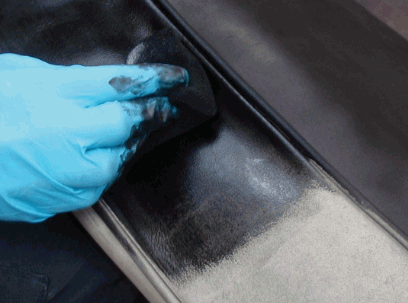
Clean The Sofa
Cleaning the leather settee thoroughly before dye application is essential for optimal results. Use a mild leather cleaning solution, vinegar, or surgical spirit to remove dirt, oils, and residues from the surface.
Begin by mixing a solution of mild soap or cleanser with water, ensuring it is suitable for leather upholstery. Gently wipe down the settee with a soft cloth dampened in the solution, making sure not to oversaturate the leather. Pay close attention to areas with heavy dirt buildup or stains, applying a bit more pressure when cleaning.
For tougher stains, a mixture of vinegar and water can be effective. Dab the solution onto the stain and let it sit for a few minutes before gently wiping it away. This helps in both dirt removal and sanitizing the surface.
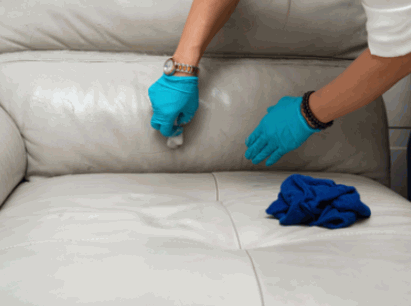
Apply The Dye
The application of the dye onto the leather settee requires precision and care to ensure an even and consistent finish.
Following the product instructions provided is crucial in achieving the desired outcome.
When applying the dye, ensure you use smooth and deliberate strokes to avoid any patchy areas or streaks. It’s essential to cover the entire surface of the settee methodically, making sure no area is left untreated. Consistency in your application technique will result in a seamless and professional-looking finish.
Let The Dye Dry
Allow the applied dye to dry completely on the leather settee before proceeding to the next steps.
The drying time may vary based on the product used, ambient conditions, and the scope of the dyeing project.
Swift completion of the drying process is crucial to ensure that the colour sets evenly and adheres properly to the leather surface, resulting in a professional finish.
Factors such as the thickness of the dye application and humidity levels can influence the drying time significantly. Time management throughout this phase is key to achieving the desired outcome.
Avoid touching the drying dye to prevent smudging or uneven results, and consider utilising fans or open windows to facilitate faster drying inappropriate ambient conditions.
Apply A Leather Conditioner
After the dye has dried, apply a suitable leather conditioner to protect and preserve the newly dyed surface. A quality finisher enhances the colour vibrancy, adds a protective coat, and ensures long-term care for the leather sofa.
Ensuring that the leather sofa is properly conditioned post-dyeing is essential in maintaining its luxurious appearance and texture. Not only does the conditioner provide hydration, preventing the leather from drying out and cracking, but it also helps retain the richness of the colour achieved through the dyeing process. Applying a quality finisher after conditioning not only locks in the colour vibrancy but also creates a protective barrier against spills, stains, and daily wear and tear.
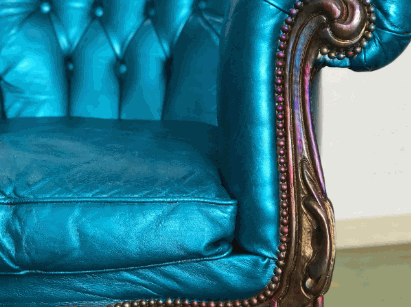
What Are The Tips For Dyeing A Leather Sofa?
When dyeing a leather sofa, it is essential to follow some key tips for optimal results. Work in small sections, apply multiple coats for vibrant colours, and protect the surrounding area for a successful dyeing project.
Working in small sections allows you to have better control over the dye application, ensuring even coverage.
Layering coats not only intensifies the colour but also helps in achieving a more professional finish. Be sure to let each coat dry properly before applying the next one. Using protective measures such as gloves and dust sheets can prevent stains in unintended areas.
Use A Soft-Bristled Brush
Utilise a soft-bristled brush when applying dye to a leather sofa to ensure gentle and even coverage. The brush helps distribute the dye effectively and minimises streaking or patchiness.
The gentle nature of a soft-bristled brush ensures that the dye is applied without harshly disrupting the leather surface. This prevents any damage or abrasions that could occur with a rougher brush, maintaining the integrity of the sofa.
The even distribution facilitated by the soft bristles also plays a crucial role in achieving a seamless finish, preventing blotchy patches and ensuring a uniform colour throughout the sofa. This meticulous approach results in a professional-looking outcome that enhances the overall appeal of the furniture.
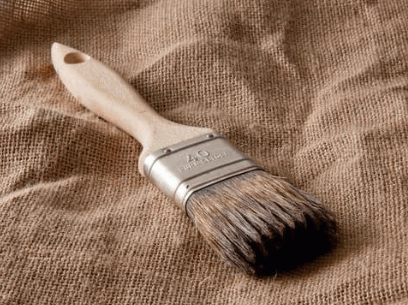
Work In Small Sections
Divide the leather settee into small sections for systematic dye application, ensuring thorough coverage and consistent colour intensity. Working methodically in sections helps avoid uneven colouring and ensures a professional finish.
By breaking down the process into manageable parts, you can maintain control over each section. This approach allows you to focus on one area at a time, ensuring that the dye is evenly distributed and absorbed.
Sections also help prevent over-saturation, which can lead to blotchy results. This method promotes colour consistency throughout the entire settee, achieving a cohesive and polished look. Taking a systematic approach to dyeing your leather settee not only guarantees a professional finish but also makes the task more manageable and less daunting overall.
Apply Multiple Coats For A More Vibrant Colour
To achieve a vibrant and rich colour on a leather settee, consider applying multiple coats of dye. Layering the dye enhances the colour depth and saturation, resulting in a more visually appealing and long-lasting finish.
By applying several coats of dye, the colour penetrates deeper into the leather, creating a more uniform and intense hue. This process not only boosts the vibrancy but also ensures better colour distribution, leaving no patches or uneven spots. Multiple dye coats increase the colour’s resistance to fading, making the leather settee more durable and maintaining its vibrant appearance over time. The result is a stunning piece of furniture that stands out with its rich and long-lasting colour.
Protect The Surrounding Area
Before dyeing a leather sofa, safeguard the surrounding area with dust sheets or protective covers to prevent accidental spills or stains. Shielding the nearby furniture and flooring ensures a hassle-free dyeing process.
By taking these precautionary steps, you can avoid any unwanted mess and save yourself from the unnecessary stress of cleaning up later. It’s essential to cover every vulnerable surface to minimise the risk of any colour transfer during the dyeing process.
Opting for high-quality dust sheets or specialised protective covers can make a significant difference in protecting your surroundings. Ensure that all edges and corners are properly secured to prevent any leaks or spills. Having spill-prevention techniques in place can provide an added layer of security against potential accidents. Embracing these preventive measures can turn the daunting task of dyeing a leather sofa into a smooth and worry-free experience.
Wear Protective Gear
For a leather dyeing project, it is advisable to wear protective gear such as gloves and aprons to minimise skin contact with the dye. Using suitable protective equipment ensures personal safety and prevents staining.
Leather dyeing involves working with various chemicals and dyes that can be harmful if they come into direct contact with the skin.
- Gloves not only protect your hands from potential irritation or chemical burns but also help in maintaining the cleanliness of your work area.
- Wearing an apron shields your clothing from accidental spills and splatters, ensuring that you can focus on your project without worrying about damaging your attire.
Prioritising personal safety when engaging in leather dyeing is essential to prevent any unwanted skin reactions or injuries. It is recommended to read the product labels carefully and follow all necessary safety measures to enjoy a successful and safe leather dyeing experience.



